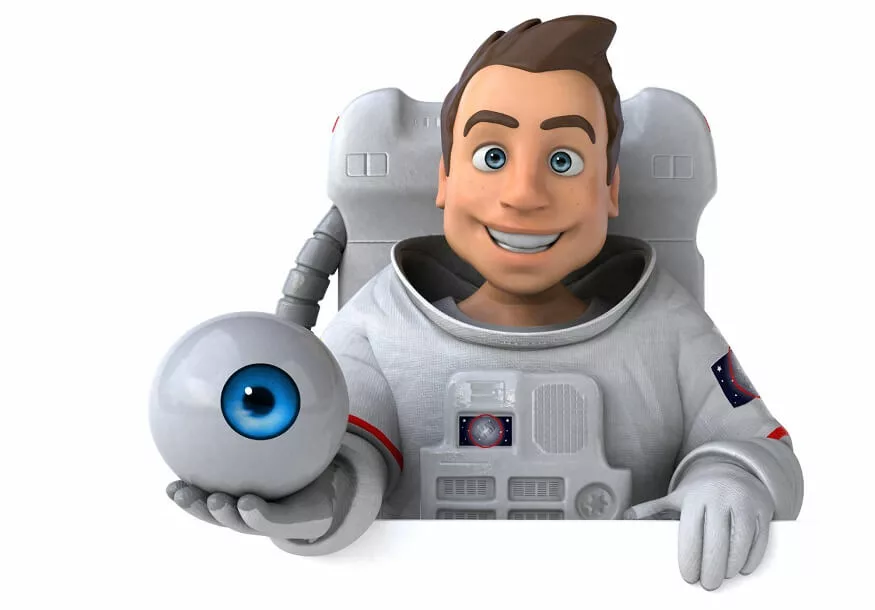Astronomers typically do not wear specialised suits like astronauts do because their work is conducted from Earth-based observatories, where they are protected by Earth’s atmosphere. However, they do use specific clothing and equipment to enhance their observations and astronauts protect themselves from environmental conditions while working at observatories. In contrast, astronauts wear spacesuits to survive in the harsh and airless space environment. In this discussion, we will delve into what astronaut’s wear and explore the technology behind spacesuits and spacesuit requirements as well as the critical reasons why astronauts need them.
What Astronauts Wear:
While astronomers do not require spacesuits, they often wear specific attire and use equipment tailored to their needs when conducting observations and research. Here are some key points for what astronauts wear.
Weather-Appropriate Clothing: Astronomers working at observatories on Earth need to dress appropriately for the local weather conditions. This may include warm clothing for cold nights or lightweight clothing for hot and humid climates. Layering is common to adjust to changing temperatures.
Headlamps: Observing the night sky often requires astronomers to read charts, take notes, or manipulate equipment in the dark. Headlamps with red LED lights are commonly used to provide low-level illumination without affecting night vision.
Gloves: Astronomers might wear gloves to protect astronaut’s hands while handling equipment or adjusting telescope components. Thin gloves with good dexterity are preferred to minimise the impact on tactile sensitivity.
Protective Eyewear: Safety glasses or goggles may be worn to shield the eyes from dust, debris, or particulates, especially in windy or dusty observing space environments.
Warm Accessories: In extremely cold conditions, astronomers may wear items like insulated hats, scarves, and hand warmers to stay comfortable during prolonged observations.
Portable Chairs or Stools: Astronomers often spend hours at telescopes, so portable seating options are essential for comfort and reducing physical strain.
Computer Equipment: Astronomers frequently use laptops or tablets to control telescopes, capture images, and analyse data. They also wear wristwatches with illuminated dials for timekeeping.
Telescope Accessories: Depending on their specific research goals, astronomers may wear or use specialised accessories like red flashlight filters, eyepieces, and camera equipment.
Also read : Top 10 Amazing Fun Facts About Earth
Technology Behind Spacesuits:
Spacesuits, also known as Extravehicular Mobility Units, are highly customised clothes meant to protect astronauts from the emergency conditions of space. Spacesuit technology is the result of years of study and development. These are the crucial parts and technology behind
Pressure Garment: The core of a spacesuit is the pressure garment, which provides a pressurised environment to shield astronauts from the vacuum of the space environment. The pressure garment consists of multiple layers, including an inner comfort layer, a restraint layer to maintain shape, and an outer protective layer.
Helmet: The helmet of a spacesuit is made of impact resistant materials and has a shield to protect the astronaut’s eyes from dangerous solar radiation and micrometeoroid impacts. It also has a gold-coated shield that controls light and temperature.
Life Support System: Spacesuits have a life support system that provides a controlled atmosphere for astronauts to breathe. This system includes a supply of oxygen and the removal of exhaled carbon dioxide. A sublimation cools the suit, while a liquid cooling garment worn by the astronaut helps regulate body temperature.
Communication device: A space suit comes with a communication device, which includes a microphone and an earpiece and allows astronauts to speak with mission control and other crew members. A reminder display for data and communication may also be included.
Radiation Protection: Spacesuits provide limited protection against solar and cosmic radiation. While not impervious to radiation, the multiple layers of the suit materials can reduce exposure to some extent.
Micrometeoroid and Debris Shielding: The outer layers of a spacesuit are designed to withstand micrometeoroid impacts and small space debris. Some suits use Whipple shields, consisting of multiple layers separated by gaps, to dissipate kinetic energy.
Articulated Joints: Modern spacesuits incorporate articulating joints that allow astronauts to move their limbs and perform tasks with relative ease. These joints are crucial for conducting complex operations during extravehicular activities (EVAs).
Portability and Mobility: Spacesuits are equipped with a Portable Life Support System (PLSS) that provides power, cooling, and communication. The PLSS is worn as a backpack and allows astronauts to move freely during EVAs.
Sizing and Customization: Each spacesuit is custom-fit for the specific astronaut who will wear it. Proper sizing and adjustments are crucial to ensure comfort, mobility, and functionality.
Also read : Amazing fun facts about Neptune
Why Astronauts Need Spacesuits:
Astronauts need spacesuits for a multitude of critical reasons to survive and carry out their missions in the environment of space. Here are the primary key points about spacesuit requirements.
Protect astronauts from Vacuum: Space is a vacuum, devoid of air and atmospheric pressure. Without a spacesuit, astronauts would experience the rapid decompression of bodily fluids, leading to severe injury or death. Spacesuits create a pressurised space environment that keeps bodily fluids from boiling at low pressure.
Breathable Atmosphere: Spacesuits provide astronauts with a controlled mixture of oxygen and nitrogen to breathe. The suit’s life support system continuously scrubs exhaled carbon dioxide and replenishes oxygen, maintaining a safe and breathable atmosphere.
Temperature Regulation: Space experiences extreme temperature variations, from scorching sunlight to frigid shadow regions. Spacesuits use layers of insulation, reflective materials, and liquid cooling systems to maintain a stable internal temperature.
Radiation Shielding: While not impervious to radiation, spacesuits provide some protection against solar and cosmic radiation, reducing astronauts’ exposure during EVAs.
Micro-Meteoroid and Debris Protection: The outer layers of spacesuits are designed to withstand micrometeoroid impacts and small space debris. These layers absorb or deflect particles, preventing them from penetrating the suit.
Communication: Spacesuits are equipped with communication systems, including microphones and earpieces, allowing astronauts to communicate with mission control and fellow crew members during EVAs.
Mobility and Articulation: Articulated joints in spacesuits enable astronauts to move their limbs and perform complex tasks while working outside spacecraft or space stations. This mobility is essential for conducting maintenance, repairs, and scientific experiments.
Life Support: Spacesuits include a life support system that provides oxygen for breathing, removes carbon dioxide, and maintains a comfortable temperature. The system also provides power and communication capabilities during EVAs.
Emergency Situations: In the case of a spacecraft or space station emergency, astronauts can utilise their spacesuits to safely leave the vessel and return to safety.
Scientific Research: Spacesuits are required for conducting scientific research, maintenance, and repairs aboard spacecraft, space stations, and other celestial planets such as the Moon or Mars.
Extravehicular: Extravehicular exercises expose astronauts to the threatening space environment, including microgravity, severe temperatures, and vacuum. In this environment, spacesuits are their sole means of survival and defence.
Independence from Life Support Systems: Spacesuits provide astronauts with the autonomy to operate outside spacecraft or space stations without relying on the station’s life support systems. This independence is crucial during EVAs.
Also read : Top 10 amazing fun facts about Jupiter
Conclusion:
Spacesuits are critical for astronaut survival and safety during extravehicular activities in the space’s environment. Spacesuit technology continues to evolve, ensuring that astronauts can execute their responsibilities safely and successfully in the environment of space. Visit EuroSchool to learn about interesting space facts.










